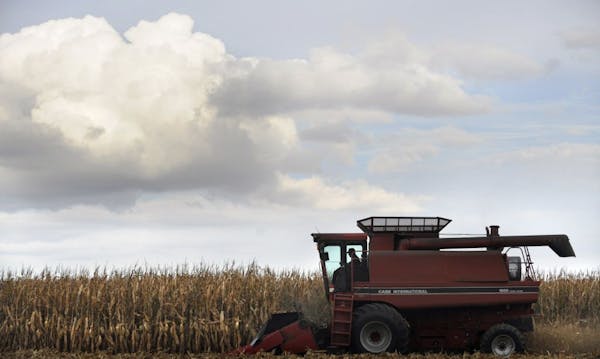Minnesota would tax farmers $0.40 per ton of fertilizer to help test and clean up thousands of private wells contaminated with agricultural runoff under a bill that cleared the House's main agricultural committee.
The proposed tax is smaller than earlier versions that had called for charging up to $0.99 per ton in the first year and escalating after that. It comes amid demands from the EPA that state pollution regulators and the Minnesota Health Department do more to prevent nitrate pollution in eight southeastern counties and to immediately provide clean drinking water to an estimated 9,000 people who may need a new source of water.
If farmers aren't required to pay for cleaning up a problem that largely is caused by fertilizer, there will be no incentive to change, said state Rep. Rick Hansen, DFL-South St. Paul, who first proposed the tax.
"It's not too much to ask for some responsibility," Hansen said. "We're going to spend millions of dollars this year of public money for cleanup costs. The people who use the product that sometimes causes the pollution need to pay for some of that cost."
The tax was opposed by Republican members of the committee. It has not moved forward in the Senate, which, like the House, is DFL-controlled.
Lawmakers have been debating how to pay for the nitrate cleanup and emergency water provisions for several months.
The proposed tax would redirect an existing $0.40 per ton tax on fertilizer that funds a state research program that aims to help increase crop yields. The fee raises about $1.2 million annually and is set to expire next year. The House proposal would replace the research tax and send the money instead to cleanup work.
The Senate has proposed extending the research tax as it is for another 10 years.
State Rep. Steven Jacob, R-Altura, said the House proposal amounts to a raid on the research program.
"This is a disingenuous attempt to hijack the fund and use it somewhere else," he said.
The EPA ordered the state on Nov. 3 to take several steps to address nitrate contamination found in private wells in Dodge, Goodhue, Fillmore, Mower, Olmsted, Wabasha, Houston and Winona counties.
The problem dates back decades. Nitrate is a chemical that is dangerous in high concentrations, and the porous geography of southeastern Minnesota makes wells particularly vulnerable to it. About 90% of the nitrate in southeastern Minnesota's water comes from fertilizers spread on croplands, a state study found in 2013.
Despite spending hundreds of millions of dollars over decades on studies, stakeholder meetings, incentives and educational and voluntary programs, the state has made almost no progress in reducing nitrate pollution.
Minnesota promised the EPA in December that it would act quickly to help residents with dangerous levels of nitrate in their wells. But four months after the promises, Minnesota has yet to deliver clean drinking water to the people most in danger.
Whether or not the tax passes, the Senate and the House plan to spend between $2 million and $3 million over the next year to start testing wells and provide impacted homes with either bottled water or reverse osmosis filtering systems. But early estimates from state agencies show costs could climb as high as $7 million, depending on how much contamination is found.

Want to share info with the Star Tribune? How to do it securely

'Safe recovery sites' would offer syringes, naloxone and more to people using drugs. The plan could be in peril.
New Minnesota GOP leaders seek peace with party's anti-establishment wing

Who is Republican Lisa Demuth, Minnesota's first House speaker of color?

